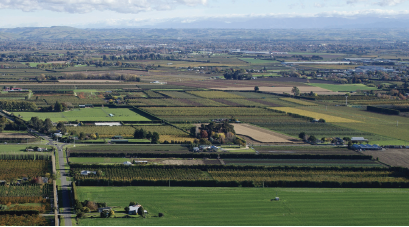It’s not as plain and simple as it seems – to protect the region’s fertile plains while also ensuring our growing population all have roofs over their heads and businesses, especially within the food processing sector, have storage, processing and packing facilities.
Hawke’s Bay has enjoyed significant population growth, especially over the last few years, and with it has come urban sprawl along with overwhelming demand for new industrial/commercial areas. You only have to drive to the outer reaches of Havelock North to notice land that was once in orchards has now been converted into residential housing, or drive south of Hastings to the relatively new Irongate Industrial Zone, which was anticipated to be at capacity in 20 years but will be at capacity in half that time.
Population growth, new businesses establishing in the region or existing businesses super-scaling their complexes portray economic success and a sense of parochial pride, but it’s also coming at a cost – especially to what many regard as the ‘golden goose’ – that being the highly productive Heretaunga Plains, which coupled with a favourable growing climate position Hastings and Hawke’s Bay as the food producing capital of New Zealand.
As more and more pressure comes on the need for housing solutions, there’s huge pressure to protect the Plains, with a group of primary sector identities keeping a close watch on resource consent applications and urging for a regional spatial plan. On the other side are landowners, developers and land-use consultants, who are also seeking guidance from local councils to identify land that could be built on.
A recent soil symposium led by Hastings District Council and Hawke’s Bay Regional Council attempted to tackle the issue; however, depending on what side of the fence you sit on, it simply further raised the issue but will take time to deliver any changes. The symposium aimed at building an understanding of the nature and value of the soils that will help inform future planning and decision-making.
It covered a range of perspectives and ideas, including the importance of the Plains to growers and mana whenua, scientific information on the soils resource
and threats to it, all of which must be considered when forming a planning framework for protecting Hawke’s Bay’s productive lands into the future.
Richard Gaddum of the Save the Fertile Soils group says, “it was a wonderful event; a day totally devoted and dedicated to the fertile soils on the Heretaunga Plains.” However, in his view, the symposium was about 50 years too late.
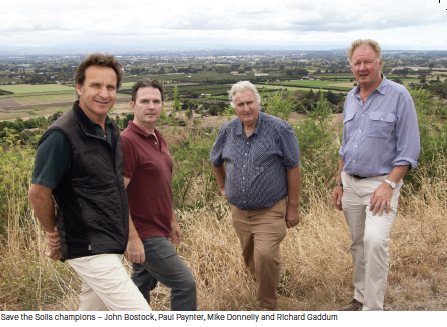
“Some say it should have been done 100 years ago; however, we were and are so delighted that it happened and that our most precious resource has been given the importance it most certainly deserves.”
Landowner John Roil, who has developed land in Irongate for his business interests as well as for other businesses, believes that the symposium was too controlled and lacked balance from the development community.
“There is no doubt that the highly productive soils need to be protected and a significant amount of work has been done over the years to identify the various types of soil.
“Once the highly valued land is identified, then further decisions can be made as to what other parcels of land is available for development.”
Many would agree with some of the solutions being mooted, such as medium and high-density housing, inner-city living and infill developments, along with identifying land in the foothills for residential development.
“The development of land in the hills surrounding Hastings seems to be a no-brainer, though the costs associated with this type of development need
to be developed further to ensure the benefits are correctly identified and communicated to the wider public, including the likely costs to develop,” says John.
Richard and his group have offered up some areas to consider such as Te Awanga, where a satellite town could be created; using unproductive land southwest of Flaxmere for both industrial and residential developments; and the lower hills of Havelock North.
“Long-term vision is required by all parties to look at the bigger picture and into the future to preserve these incredibly fertile soils for future generations. Our short-term solutions are just not sustainable.”
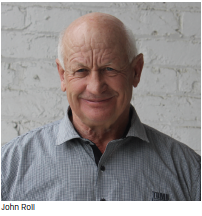
John is equally committed to protecting as much of the fertile soils as possible but warns that councils will need to meet some of the costs of developing on land that’s more difficult to service infrastructure, such as three waters and roading.
“Any development should be balanced against the financial costs to expand and if the wider costs have some community benefit then council could contribute to the infrastructure and roading to make it affordable.
“Currently, developers pay 100 percent of the costs with councils collecting the additional rates into their pool of income without any form of contribution.
“It may be time that council reconsider its involvement with development in order to balance the community’s desire to protect the valued land resource on the Heretaunga Plains.”
John would welcome another symposium or meeting with greater involvement from the developer community to assist councils develop a long-term plan.
“It may be surprising to hear that the two groups share more in common than one would imagine.”
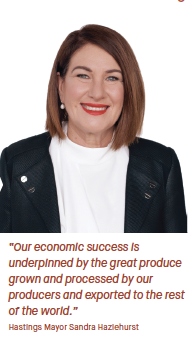
Hastings mayor Sandra Hazlehurst says that with Hawke’s Bay being the largest apple-producing region in the country, and the second-largest wine producer after Marlborough, it demonstrates the importance of the Plains to horticulture and viticulture, and the importance of those industries to our region.
“Our economic success is underpinned by the great produce grown and processed by our producers and exported to the rest of the world. Its economic value to our region is in the hundreds of millions of dollars.
“That wouldn’t happen without our superb Heretaunga Plains land and water resources, and our fantastic growing climate that makes them even more special.” However, Sandra acknowledges it is important to develop a new strategy that balances future growth while protecting land resources.
“But this economic success creates pressures and threats to the land resource. Together with Napier City and the Regional Council, we are about to prepare a Future Development Strategy for the Heretaunga Plains area, which will cover how we accommodate future growth while protecting our land resources for the future. “These strategies are essential in determining how we will manage growth and protect our soils for the future.
Importantly, they will allow our communities a say in how the various pressures on our soil resources should be managed.”
Outgoing Hawke’s Bay Regional Council chair Rick Barker says the region’s soils took nature millions of years to create.
“They are nature’s gift that must be protected. We humans cannot create them, and they won’t come again. These soils fuel our horticulture, viticulture and agricultural sectors. It’s on these soils that we have built our wealth.
“A growing population has driven urban expansion, putting irreplaceable soils under houses, factories, concrete and tarmac. If this expansion doesn’t stop we will have smothered the goose that lays golden eggs.
“Local government must protect these irreplaceable soils and must redirect development elsewhere. Accommodation must go up, not out.
“Protecting the environment and these fertile soils has to be a non-negotiable, no compromise, a number-one priority transcending any and all of the individual interests of developers and landowners. “We must accept that we are temporary guardians of the land, and that the land will be here for countless generations to follow. Our gift to future generations must be the land in its best state of preservation.”
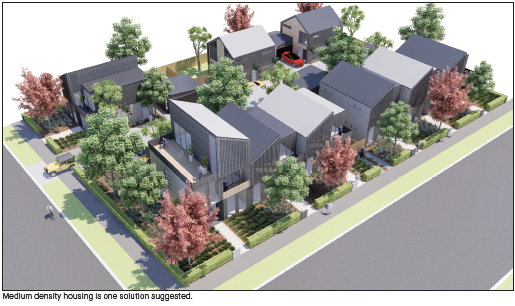
One of Hawke’s Bay’s largest pipfruit growers, Paul Paynter from The Yummy Fruit Co, says productivity has increased hugely over the last decade due
to new growing methods, smart AI technology and labour efficiency.
“Yields from modern orchards are up about 60 percent on what we produced 10 years ago and will only be more efficient and technologically smarter. “Already orchards are more labour-friendly and respond better to targeted irrigation and the strategy is to make them ‘robot ready’, which is a way off yet but certainly the use of unmanned tractors and ground-based drones is already here.
“AI is also making it more focused – I’ve seen a drone that looks for and identifies weeds for spraying, rather than just spraying everywhere.”
Above all though, Paul says visiting growers from overseas marvel at what local growers produce.
“I’ve had many growers from Belgium or Germany who don’t believe the numbers I show them and marvel at what we can do. It’s simply not possible there.
“Our benign climate, long growing season, fertile soils, modest rainfall, excellent drainage and flood control, good water-holding capacity of the soils, a healthy aquifer and high light intensity are all key factors.”
Paul says, “we can’t go back and correct the wrongs of the past, including building Hastings on the best soils in the world, but we do know where bad soil is and where new residential development can be.
“There isn’t much good soil in Napier and certainly south of Hastings is poor, from Flaxmere to Pakipaki. Also along the Tukituki and Te Awanga area is poor.
“I think the establishment of a new community is wise for expansion but a big project. I like the idea of employing all the new technology for water, sewerage, drainage attenuation, power and the like to make for lower impacts on the environment. It’s easier to do this on a new subdivision than it is to retrofit.”

